Key takeaways:
- Interfaith dialogues foster mutual respect through personal storytelling, highlighting shared humanity and bridging gaps between different beliefs.
- Key principles for effective dialogue include active listening, humility, and focusing on shared values like compassion and justice.
- Creating a safe space enhances discussions, where open seating arrangements and ground rules encourage vulnerability and connection among participants.
- Humor and personal narratives can break down barriers, transforming the atmosphere and enriching the dialogue experience.
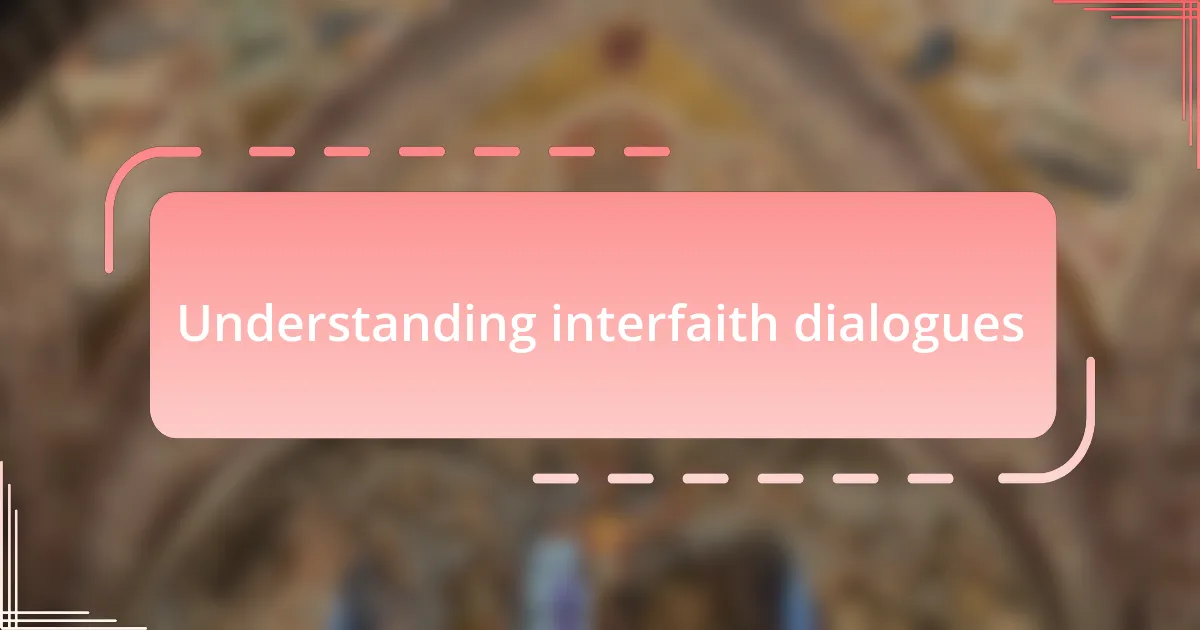
Understanding interfaith dialogues
Interfaith dialogues are more than just discussions; they represent opportunities for individuals of different faiths to come together, share perspectives, and build mutual respect. I recall a session where a Jewish participant shared a poignant story about a family heirloom that symbolized their tradition, prompting others, including a Muslim attendee, to relate similar items from their own practices. This exchange highlighted how personal narratives can bridge gaps in understanding and foster deeper connections.
When I engage in these dialogues, I often find myself reflecting on the questions we pose: How do our beliefs shape our identities? Why is it crucial to understand and respect others’ viewpoints? I believe that these conversations play a vital role in dispelling myths and misconceptions, paving the way for a more harmonious coexistence among diverse communities. Each question leads to a rich exploration of experiences and teachings that illuminate our shared humanity, drawing us closer together.
Moreover, interfaith dialogues create a safe space where individuals can voice their beliefs without judgment. I’ve witnessed firsthand how honesty and vulnerability during these discussions can transform an atmosphere of skepticism into one of empathy. It is in these moments of connection that we begin to unravel the complexities of our faiths, allowing us to learn from one another and celebrate our differences as enriching rather than divisive.
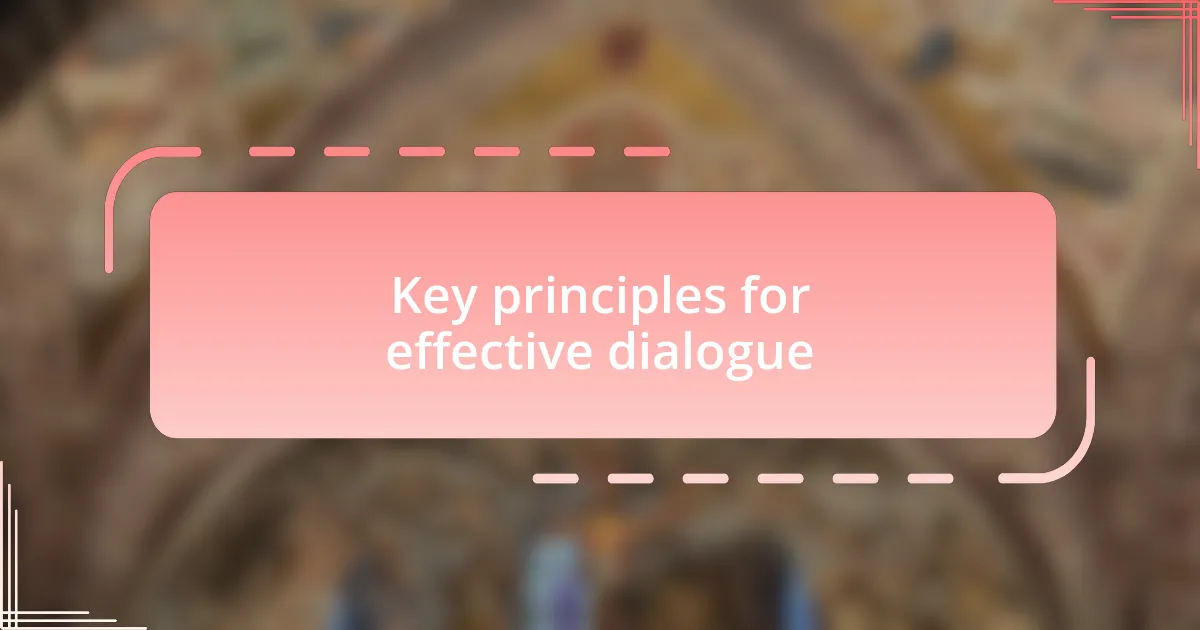
Key principles for effective dialogue
Effective dialogue relies heavily on the principle of active listening. In my experience, when participants genuinely listen to one another, the atmosphere shifts from conflicting views to a space of shared curiosity. I often encourage attendees to reflect on what they hear, asking questions like, “What resonates with you from that story?” This not only deepens understanding but also fosters a sense of community.
Another essential principle is humility. I remember a time when I shared my thoughts on a sensitive topic and felt the urge to defend my position. However, I soon realized that admitting my uncertainties opened the floor to more honest discussions. This vulnerability not only deepened my connection with the group but also created a safe space where others felt empowered to express their uncertainties and thoughts as well.
Lastly, establishing shared values can be a cornerstone of effective interfaith dialogue. I’ve found that focusing on common values, such as compassion and justice, creates unity among diverse beliefs. In one instance, participants bonded over their commitment to community service, reflecting on how their faiths inspired them to give back. These moments remind me that while our doctrines may differ, our aspirations for a better world are often beautifully aligned.
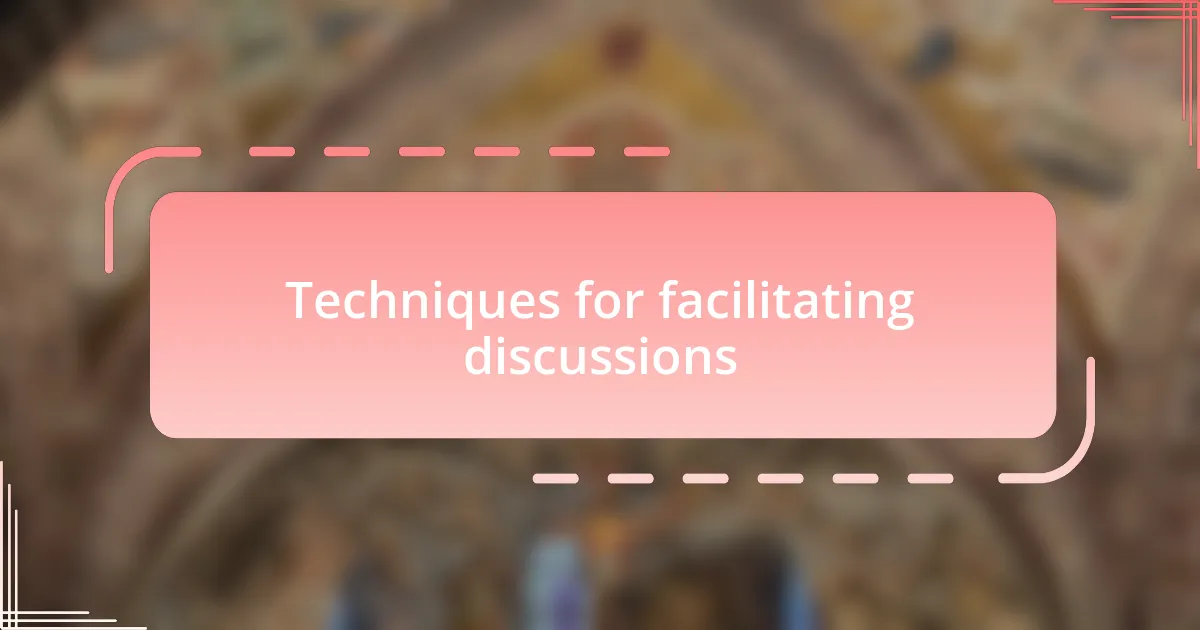
Techniques for facilitating discussions
Facilitating discussions is often about creating the right environment. I’ve discovered that setting a tone of openness from the start can transform the dynamics of the conversation. For example, I often begin sessions with a simple agreement: no one will be criticized for sharing their beliefs. It seems small, but I’ve seen how this assurance encourages even the quietest individuals to share their experiences and thoughts, enriching the dialogue for everyone.
Another technique I find effective is the use of storytelling. When participants share personal narratives related to their beliefs, it draws listeners in on a human level. I remember one participant speaking about a family tradition tied to their faith; the passion in their voice seemed to bridge gaps and foster empathy among others who may not have experienced the same practices. Have you ever noticed how stories can connect us in profound ways? It’s a reminder that behind each belief, there’s a personal journey waiting to be explored.
Lastly, employing open-ended questions sticks with me as a key technique. In my experience, queries like, “How does your faith influence your view on kindness?” can lead to rich conversations. I’ve seen the group awaken as they take a moment to reflect deeply, challenging themselves to articulate their values in a supportive setting. Questions that encourage participants to think and share stimulate meaningful exchanges and illuminate diverse perspectives often overlooked in more formulaic discussions.
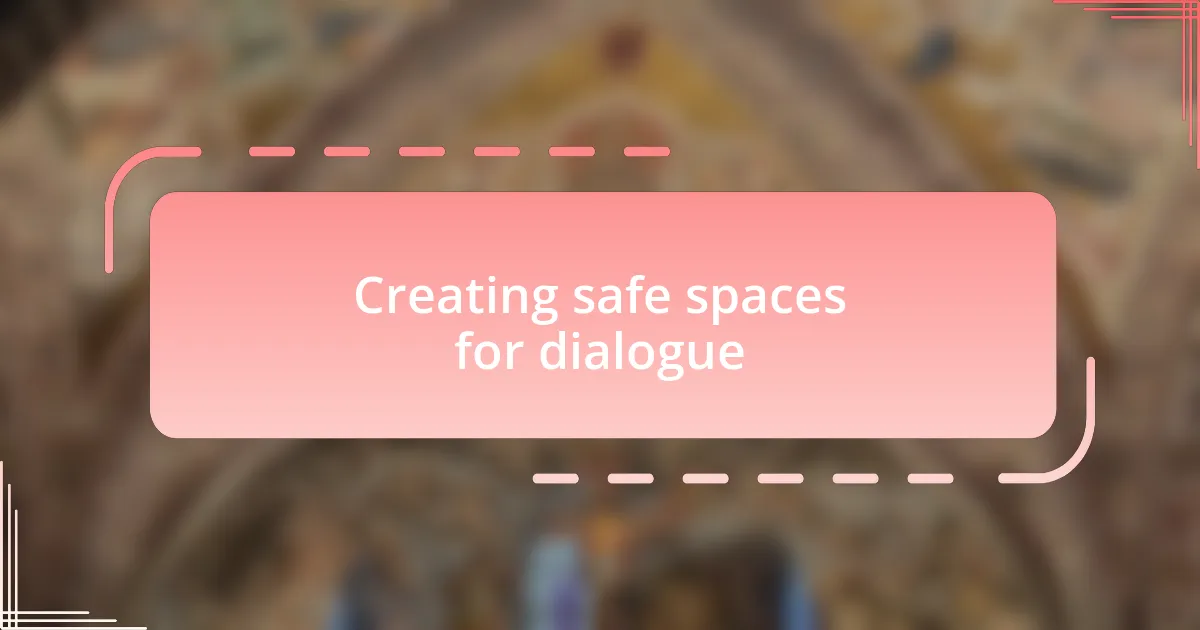
Creating safe spaces for dialogue
Creating a safe space for dialogue is essential, and I’ve learned that the physical setting can play a huge role. Once, during an interfaith dialogue at a community center, I arranged chairs in a circle rather than in rows. This simple adjustment invited connection; participants felt more like equals, and it ignited conversations unlike any I had experienced before. Have you ever noticed how just facing each other can shift the atmosphere?
Another important element is the use of active listening. I find that when I genuinely listen, acknowledging feelings and validating experiences, it lays a powerful foundation for trust. There was a moment when a participant shared her struggles with faith in a judgmental family environment. My heart went out to her as I nodded and reiterated her feelings. This act not only empowered her but also encouraged others to share their own fears and uncertainties. It was a beautiful reminder of how vulnerability can foster resilience.
Lastly, I really believe in the power of ground rules. Establishing guidelines—like respecting differing beliefs and keeping an open mind—creates boundaries that protect the dialogue. I once led a session where we all agreed to pause if emotions ran high, allowing a moment for reflection. This practice not only showed participants that their feelings mattered but also gave everyone the tools to manage difficult discussions, enabling a more productive and enriching exchange. Isn’t it fascinating how structure can enhance the depth of the conversation?
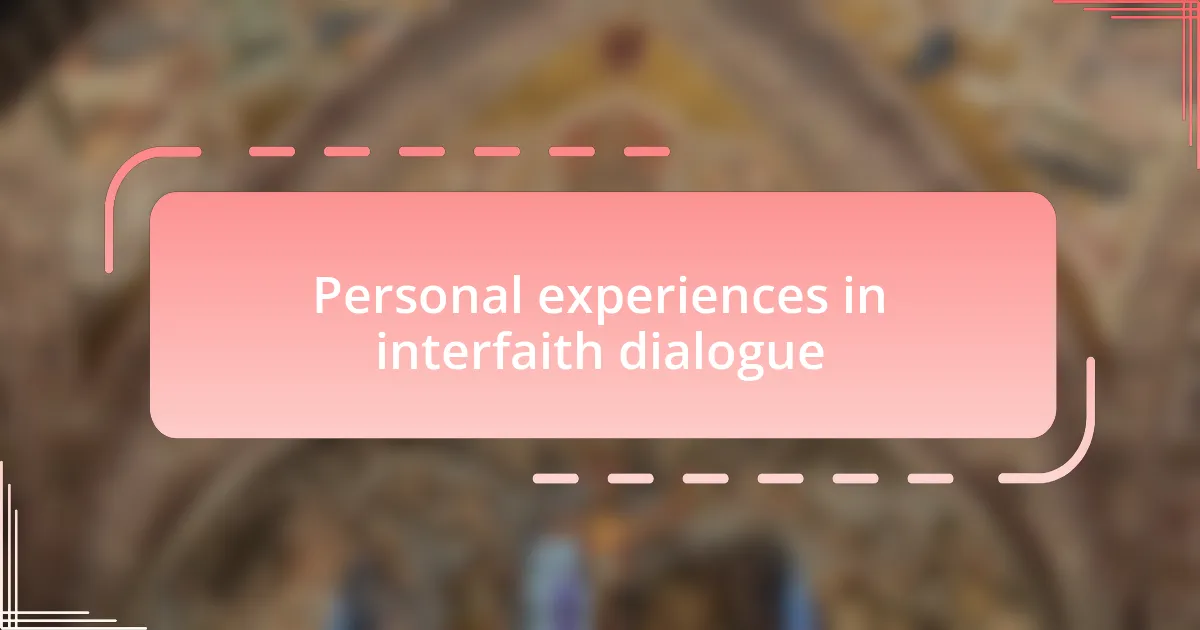
Personal experiences in interfaith dialogue
There was a particularly memorable moment during an interfaith dialogue when a young man shared his struggle to reconcile his modern beliefs with the traditions of his upbringing. I could feel the tension in the room; it was palpable. As he spoke, I was reminded of my own experiences of grappling with faith and how sharing those vulnerabilities can bridge gaps. Have you ever felt that rush of relief when you realize you’re not alone in your struggles?
On another occasion, I facilitated a dialogue between individuals from vastly different faith backgrounds. At first, the participants seemed apprehensive, hesitant to delve into deeper topics. However, after sharing my own story about seeking understanding in unfamiliar beliefs, it opened the floodgates. I watched as people leaned in, asking questions and expressing curiosity. It was incredible to witness how personal storytelling catalyzed connection and turned apprehension into meaningful exchange; have you considered the power of your own narrative in fostering understanding?
Finally, I recall a session where laughter unexpectedly erupted during a serious conversation. It began when someone made a light-hearted comment about how different faiths celebrate similar values. Suddenly, the atmosphere shifted from serious to joyful, allowing deeper discussions to emerge. This taught me that humor can be a powerful tool in interfaith dialogue, breaking down barriers and making participants feel more at ease. Have you ever noticed how laughter can transform a space, making it more welcoming for honest conversations?